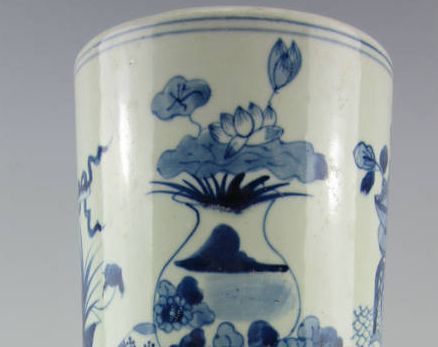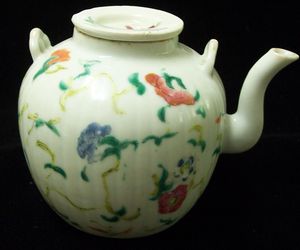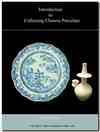Antique Porcelain Authentication
An
antique porcelain authentication will verify if an antique piece is
genuine and not a reproduction or fake item, but it does not necessarily
concern itself with the item's value.
Basically, three steps are necessary to authenticate an antique item:
- Identification of what you have.
That is, first it needs to be clarified if it is of Chinese origin.
- Next needs to be checked if an item is a genuine antique or a fake.
- Determining the age of the antique.

What options are open for antique porcelain authentication?
- Do the antique authentication yourself (requires good knowledge and many years of experience)
- Ask a third party (e.g. a knowledgeable collector, appraiser, etc.) to do it for you.
- Scientific authentication of antique ceramics
If you own an antique item and wish to know more about it, you can request an appraiser for an
antique appraisal
. To put a value on the item the appraiser will also have to authenticate the item first.
Professional authentication or appraisal
An antique porcelain authentication by a professional is recommended
before you purchase or bid for any antique of considerable value, just
to make sure.
Even experts sometimes fail and don't recognize very good reproductions.
A full authentication can sometimes be a bit expensive and time
consuming when it comes to antique Chinese porcleain. But, see this
example of a properly done antique
Chinese porcelain authentication by J.P. O'Brien.
Identify and verify porcelain yourself
If you are a collector of Chinese porcelain, consider studying its
related issues to some deeper extent. This should enable you to judge
authenticity yourself, at least to some degree. No easy matter when it
comes to Chinese porcelain, for sure, as there is a lot of peripheral
knowledge required.
 |
European porcelain, for example, |
There is really much to learn, but the effort will pay off in the end.
Learn the basics and identify porcelain yourself.
Free antique identification is available on the Internet. Some online
antique stores do provide them, but it is mainly available in forums
where collectors help each another. It cannot be emphasized enough,
however, that only a Chinese porcelain expert will do. Places where you
can get in contact with people who have real, reliable knowledge
regarding Chinese antique porcelain authentication are few, and some may
require paid membership.
You could use one of the websites on the Internet offering antique porcelain authentication help, or consider an online antique appraisal
or the services of an appraiser offline, if you need assistance with the authentication of a piece.
Scientific Authentication Methods of Ceramics

Recommended learning:
We highly recommend J.P. O'Brien's website for realistic and detailed information regarding antique China porcelain.
It
gives you a good overview of a selection of Chinese porcelain items
covering several dynasties, and there are more details than many books
provide. This type of site can be of help with antique porcelain
authentication as it shows simple yet down-to-earth information and
pictures of an average collection. No rasping on the rare and beautiful
(and possibly fake) high-end ceramics from official kilns which the
average collector is unlikely to ever own.
Chinese Porcelain of the Ming and Qing dynasties, by J.P. O'Brien
Sources suggested for your quest:
"The Wanli Shipwreck and its Ceramic Cargo", this
book from Nanhai Marine Archaelogy contains a wealth of information and
pictures on early Chinese ceramics, and shipwrecks ceramics in
particular.
This page shows good examples of common Chinese ceramics that were exported. Please note that this is NOT what is usually called "export porcelain". The latter is a common designation for porcelain specifically produced for export, and which was little used in China itself. It was shipped to Europe (mainly), and to Japan and some other locations in Asia, during the late Ming and Qing dynasties.
The originally exported porcelain was often of the same type as that used in China itself. The porcelain found in the Desaru is of the latter type. The Desaru is one of the shipwreck catalogued by Nanhai Marine Archaeology Sdn. Bhd.
Generally, shipwreck items are important because they allow dating other items by comparing them to shipwreck items, which in turn can be dated if the approximate time of the wrecking is known.
******************************************************
Go from Antique Porcelain Authentication to Home
Antique Porcelain Appraisal
How to determine the age of Chinese antiques

